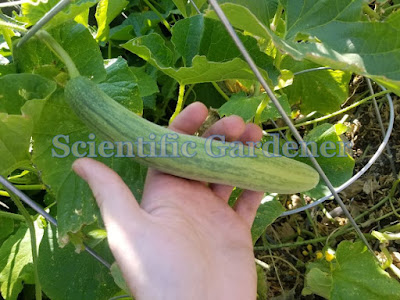While I would love to continue blogging and running a seed business, there is only so long I can run my little shop by myself. Over time, in order to ensure I leave a lasting legacy, it is important that I branch out and work with others – and one day leave my business to someone else. Planning for succession of seed businesses is very important to do early-on in the company. For me, succession could entail a number of possibilities. These include some of the following options:
1. Entrusting specific immature Cucumis melo varieties to individual seed companies and splitting Cucumber Shop into smaller parts.
 |
| Entrusting my Light Carosello Leccese to Uprising Seeds |
2. Finding a large seed company that will gobble up my little seed company for the sole purpose of customer mailing lists and drop all of the varieties that they do not see as highly profitable.
 |
| Growing out the Striped Leccese with Maceo of H&K Farms |
3. Finding an individual or group of individuals who are willing to do the work to cherish and steward my indigenous heirloom seeds into the future.
While there are a number of other options out there, option 3 is my preferred option with option 2 being my least preferred. Option 2 is my least preferred option and would likely go against everything I have set out to do in my little cucumber seed shop. Given the high quality of my cucumber varieties, my hope is that the higher-end portion of my business will gather enough traction to enable my company to live on as a farmer-owned seed cooperative.
The purpose of my discussion about succession, is that you may find that I am trying out some new things to try to involve others in the growing and appreciation of these incredible cucumber varieties. No matter what happens or how long I continue to manage Cucumber Shop, it will always be my pleasure to offer access to as many delicious cucumbers as I can possibly provide.




















































































